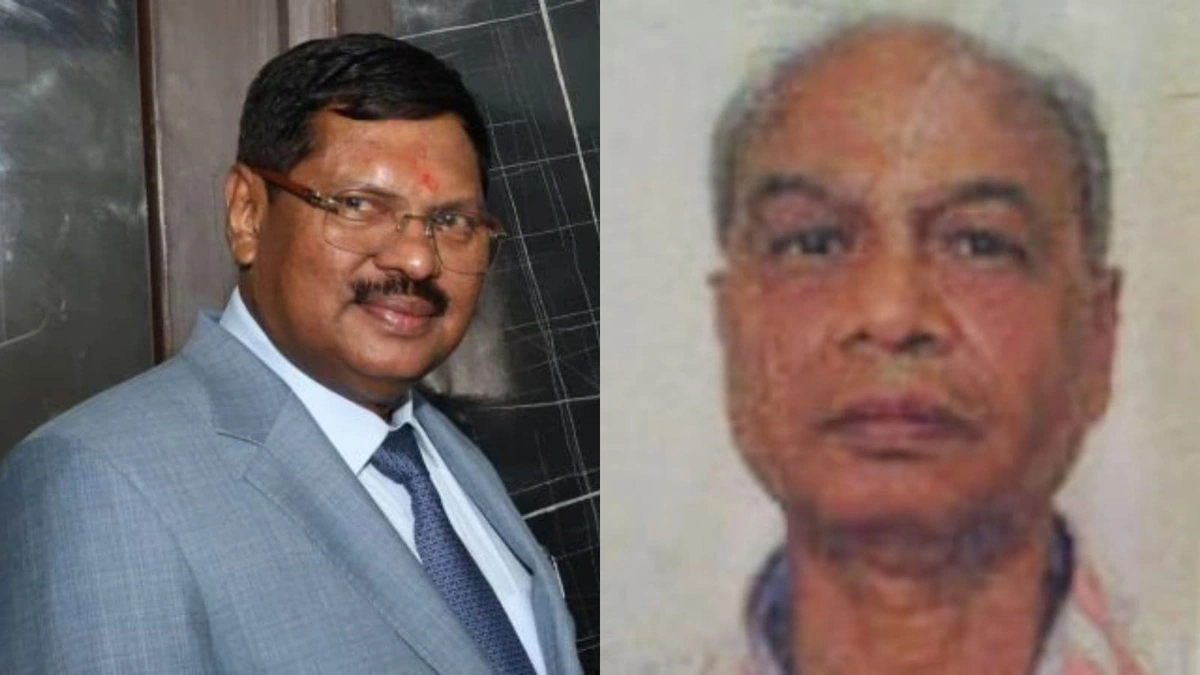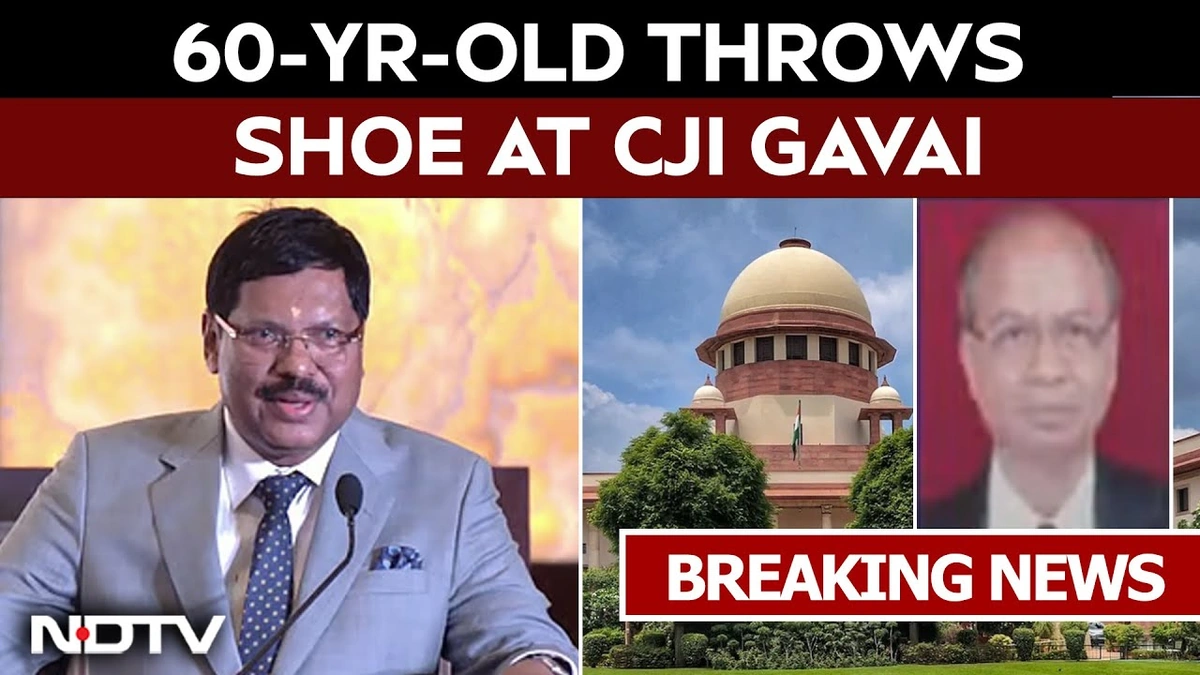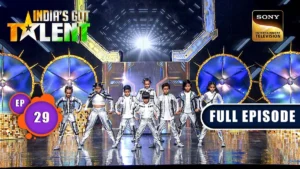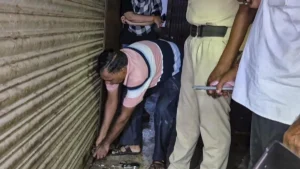Lawyer Tries to Throw Shoe at CJI Gavai, Cites Sanatan Dharma Insult
Okay, let’s be real. We’ve all seen some courtroom drama, maybe even a shouting match or two. But a lawyer attempting to hurl a shoe at the Chief Justice of India (CJI) ? That’s a whole new level of… intensity. The incident involving CJI Gavai has definitely stirred things up, prompting some serious questions about the state of legal discourse and the underlying tensions simmering beneath the surface. It happened recently, and while the immediate news cycle focused on the ‘what’ – the shoe, the lawyer, the courtroom – I want to dig into the why. What drove this extreme action? And what does it tell us about the bigger picture? Also, what could be the possible contempt of court charges for the lawyer involved?
Decoding the Outburst | More Than Just a Shoe

Here’s the thing: throwing a shoe is almost universally seen as a sign of deep disrespect. It’s an act loaded with symbolism, suggesting utter contempt for the target. But, simply dismissing it as a random act of lunacy is a mistake. It’s crucial to examine the motivations behind it. The lawyer in question, while being subdued, reportedly cited an ‘insult to Sanatan Dharma’ as the reason for his actions. Now, that’s a loaded statement that requires some unpacking.
Sanatan Dharma, often considered synonymous with Hinduism, is a vast and complex system of beliefs and practices. Interpretations vary wildly, and what one person considers an insult, another might see as a legitimate critique. This brings us to the core of the issue: differing perspectives and the explosive potential when those perspectives clash. What I find interesting is how quickly such incidents can escalate and how important it is to have mechanisms for addressing grievances peacefully and respectfully. This also brings the discussion of free speech and expression into the spotlight.
The Sanatan Dharma Context | A Deep Dive
Let’s delve a bit deeper into this ‘insult to Sanatan Dharma’ claim. Without condoning the lawyer’s actions, it’s important to understand where such sentiments might originate. In recent years, there has been increasing debate and discussion around various aspects of Sanatan Dharma, both within and outside the Hindu community. Some individuals and groups feel that certain interpretations or practices are being unfairly criticized or misrepresented. This perceived misrepresentation, amplified by social media and the 24-hour news cycle, can lead to feelings of anger and resentment. It’s a complex issue with no easy answers. Exploring the history of religious debates in India might also provide some additional insight.
Think of it like this: imagine someone constantly misinterpreting your words or actions, twisting them to fit a negative narrative. Wouldn’t you eventually feel frustrated and possibly lash out? Now, scale that up to a community level, and you start to get a sense of the emotional intensity involved. This doesn’t excuse the lawyer’s behavior, but it helps to contextualize it. And sometimes, that context is everything. Consider also the concept of blasphemy laws in India and how they might relate.
Implications for the Judiciary and Public Discourse
But, beyond the immediate context, this incident raises some serious questions about the judiciary and public discourse. Firstly, it highlights the need for enhanced security measures in courtrooms. While absolute security is impossible, it’s vital to ensure that judges and other court personnel are protected from harm. Secondly, it underscores the importance of maintaining civility and decorum in legal proceedings. Disagreements are inevitable, but they should be expressed through proper channels, not through acts of violence or disrespect. As mentioned earlier, the lawyer could be charged with contempt of court .
And finally, it’s a wake-up call for all of us to engage in more thoughtful and constructive dialogue. Shouting matches and personal attacks get us nowhere. We need to create spaces where people can express their views freely and respectfully, even when those views differ significantly. That’s easier said than done, of course, but it’s a goal worth striving for. It is also important to consider the role of media coverage of court proceedings .
What Happens Now? The Aftermath and the Lessons
So, what happens next? The lawyer will likely face legal consequences for his actions. The courts will need to address the security concerns raised by the incident. And, hopefully, the incident will spark a broader conversation about the importance of respectful dialogue and understanding different perspectives. A common mistake I see people make is to immediately jump to conclusions without considering the complexities involved.
I initially thought this was just another news story, but then I realized it was an opportunity to delve deeper into the underlying issues and explore the challenges of navigating a diverse and often divided society. It’s a reminder that words matter, actions have consequences, and empathy is more important than ever. We also need to be careful about the spread of misinformation and fake news , which can further inflame tensions.
It’s crucial to uphold the integrity and dignity of the judiciary. The judiciary must be able to function without fear of intimidation or violence. This is essential for maintaining the rule of law and ensuring that justice is served. A judicial system that is under threat is a threat to democracy itself. This event also raises concerns about courtroom security protocols .
While sources suggest a specific motive, the official confirmation and complete details of the investigation are still pending. It’s best to keep checking reputable news sources for updates. As per the guidelines regarding court procedures, any disruption can lead to immediate consequences. This is how the legal system tries to maintain order. The incident involving the lawyer trying to throw a shoe at CJI Gavai is a reminder of the deep divisions that exist within our society and the challenges we face in promoting understanding and respect. But it is also an opportunity to learn from our mistakes and work towards building a more just and equitable society for all. The incident also calls for a review of the Constitution to ensure that it continues to serve as a beacon of hope and a source of inspiration for generations to come.
FAQ Section
Frequently Asked Questions
What specific legal charges could the lawyer face?
The lawyer could potentially face charges of contempt of court , disruption of court proceedings, and possibly assault, depending on the specific details and interpretation of the law.
How does this incident reflect on the state of legal professionalism in India?
This incident, while isolated, raises concerns about maintaining decorum and respect within the legal profession. It highlights the need for continued emphasis on ethical conduct and adherence to professional standards.
What measures can be taken to prevent similar incidents in the future?
Enhanced security measures in courtrooms, improved screening procedures, and increased awareness of the importance of respectful discourse can help prevent similar incidents.
What is Sanatan Dharma, and why is it relevant to this incident?
Sanatan Dharma, often considered synonymous with Hinduism, is a complex system of beliefs and practices. The lawyer cited an ‘insult to Sanatan Dharma’ as the reason for his actions, highlighting the sensitivity surrounding religious beliefs and interpretations.
What if someone has a grievance against the judiciary?
There are established legal channels for addressing grievances against the judiciary, including filing complaints with the appropriate authorities and pursuing legal remedies through the courts. As per the guidelines, these actions must be performed within proper channels.
Where can I find reliable information about this incident and related legal proceedings?
You can find reliable information about this incident and related legal proceedings from reputable news organizations, official court documents, and legal resources.
The incident is a harsh reminder of the fine line between protest and disruption, between expressing dissent and disrespecting the institutions that are meant to uphold justice. It forces us to confront uncomfortable truths about our society and to ask ourselves: how can we foster a more inclusive and understanding environment where disagreements are resolved through dialogue, not disruption? Let’s be honest, it’s a question we all need to be asking ourselves.
By the way, here is another article about someone who wanted to run for elections: Tulsi Burnley













